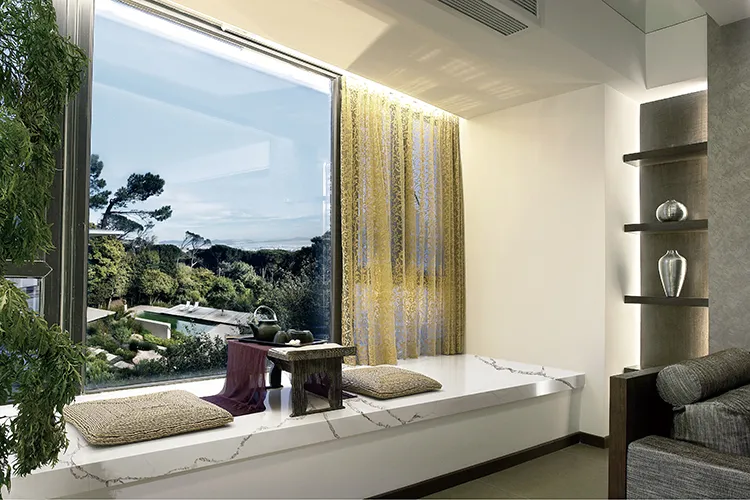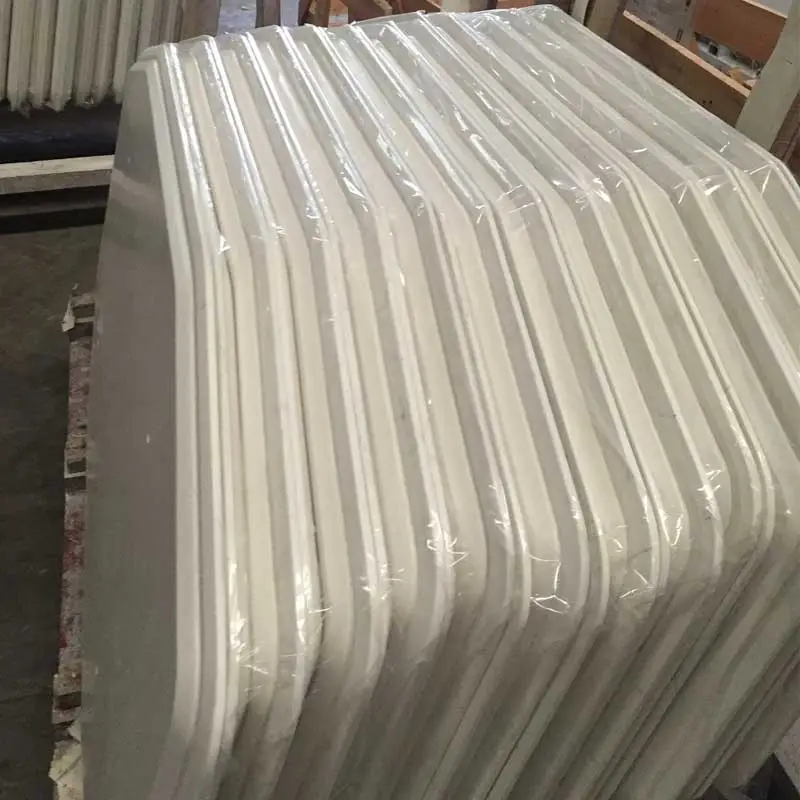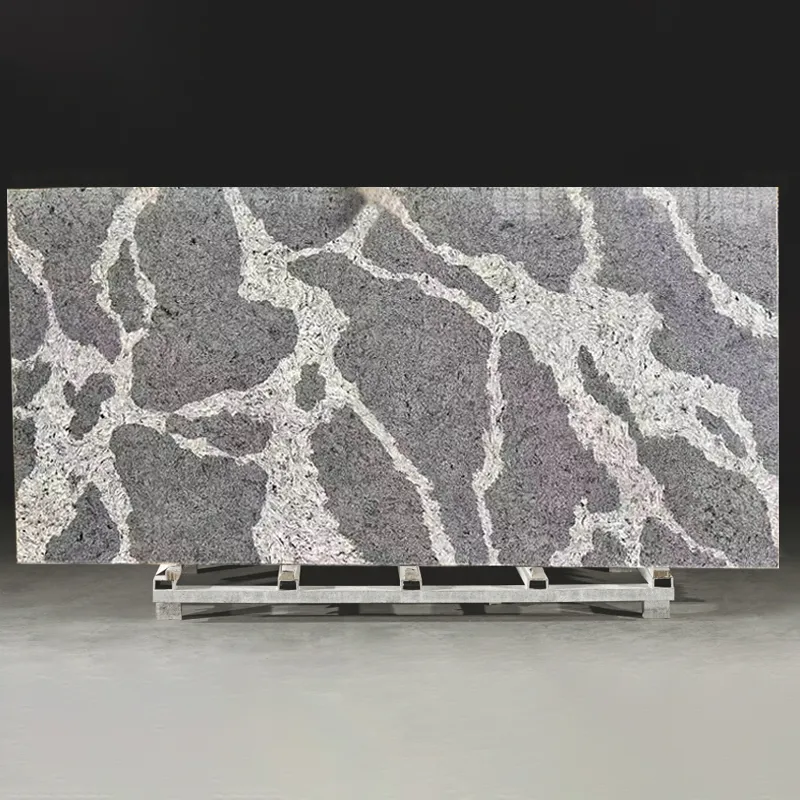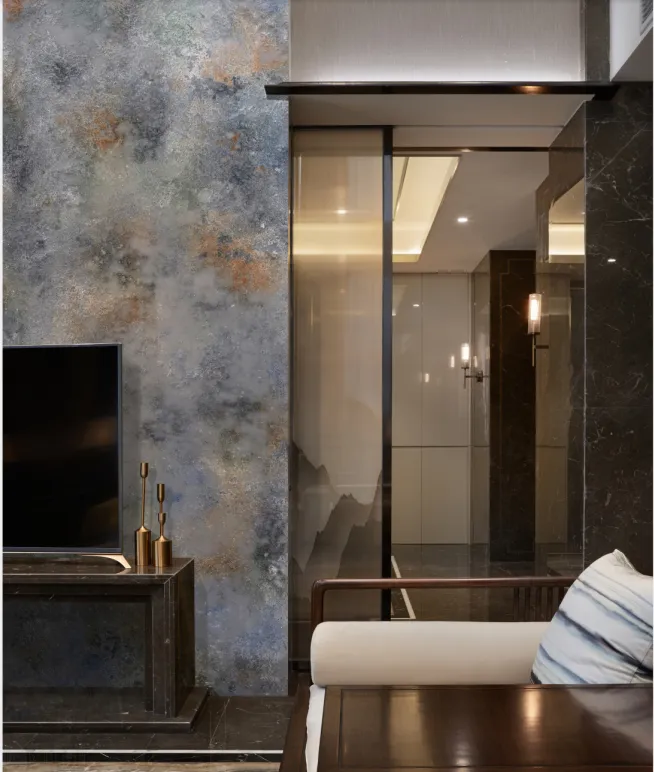Quartz stone benchtop is widely used in kitchens, bathrooms, laundry rooms and other spaces due to its hardness, scratch resistance, stain resistance and beautiful appearance. However, in the installation and processing of quartz stone benchtop, "edge shape" is a crucial link. The edge not only affects the overall aesthetics of the countertop, but is also directly related to its safety, durability and cleaning convenience. So, the question is: What type of edge is best for quartz stone benchtop?
This article will compare different types of edge shapes in detail from multiple perspectives such as functionality, aesthetics, safety, and construction technology, and deeply analyze the adaptability of each edge shape to quartz stone benchtop, so as to provide a rigorous logical basis for the answer of "best fit".

Material properties of quartz stone countertop and the necessity of edge treatment
1. Material basis of quartz stone countertop
Quartz stone countertop is usually made of more than 90% natural quartz particles mixed with about 10% polymer resin and pigment, and has the following characteristics:
·High hardness: Mohs hardness can reach level 7, strong scratch resistance;
·Low porosity: not easy to penetrate, easy to clean;
·Medium impact resistance: although hard, but the corners are relatively fragile;
·Can be cut, polished, and chamfered: good processing performance, suitable for a variety of edge shaping treatments.
Therefore, the edge treatment of quartz stone benchtop can not only enhance its decorative effect, but also play a functional role in protecting the edge of the countertop and improving the comfort of use.
2. The importance of edge treatment
The edge of the quartz stone benchtop is the most vulnerable part to impact, wear and thermal expansion and contraction. Reasonable edge shaping can:
·Reduce damage from bumps and improve safety;
·Reduce the concentration of force on the edge and prevent cracking;
·Improve the overall aesthetics and coordination;
·Reduce dirt and improve cleaning efficiency;
·Adapt to different styles and space requirements.
Therefore, choosing the right edge shape is of decisive significance for extending the service life of the quartz stone benchtop and ensuring its practicality.

Common quartz stone benchtop edge shape types and their characteristics
There are many types of edge treatments used for quartz stone benchtops on the market. The following lists and analyzes the most common ones.
1. Straight Edge / Eased Edge
Features:
·Simple shape, right angles or slightly rounded corners;
·Simple processing technology and low cost;
·Clear lines and strong modern feel.
Advantages:
·Coordinate with modern style;
·Smooth surface and easy cleaning;
·The thickness and strength of the countertop can be retained to the greatest extent.
Disadvantages:
·The corners are slightly hard and there is a risk of bumps
·If not handled properly, corners are prone to chipping.
Applicability analysis:
Applicable to quartz stone benchtops with a thickness of 20mm or 30mm. It is recommended to round the edges to improve comfort.
2. Rounded edges (Full Bullnose / Half Bullnose)
Features:
·Complete semicircular or quarter-circular arc edges;
·Smooth and soft surface.
Advantages:
·High safety, suitable for families with children or the elderly;
·Not easy to collapse or crack;
·Visually increase the sense of heaviness and create a high-end feel.
Disadvantages:
·Complicated processing technology and high cost;
·The bottom of the arc is prone to water accumulation and dirt;
·Occupies a certain space under the countertop.
Applicability analysis:
Suitable for thicker quartz stone benchtops (≥30mm), and it is best used in areas such as islands and breakfast bars that focus on visual thickness.
3. Beveled Edge
Features:
·The edge of the countertop is beveled at an angle of 45° or 30° to form an angular outline;
·The appearance is neat and modern.
Advantages:
·Easy to clean, water stains are not easy to remain;
·Strong sense of shape, highlighting the beauty of lines.
Disadvantages:
·Sharp edges and corners, slightly less safety;
·If hit, the beveled corners are easy to crack.
Applicability analysis:
Recommended for medium-thick quartz stone countertops (20~30mm), more suitable for modern style kitchens, and need to be matched with appropriate space layout to avoid safety hazards.
4. Pencil Edge
Features:
·The corners are in a small semicircular arc shape;
·Between flat edges and round edges.
Advantages:
·Improve the edge's ability to resist knocks;
·The visual effect is natural and smooth, not stiff;
·Easy to clean and not easy to accumulate water.
Disadvantages:
·Aesthetics are average, not outstanding enough;
·Generally suitable for some design styles.
Applicability analysis:
It is widely applicable to most quartz stone benchtop thicknesses. It is the most common and practical edge form and is recommended for daily kitchen work surfaces.
5. Laminated Edge
Features:
·A layer of quartz stone is bonded under the edge of the quartz stone countertop to make the edge appear thicker;
·It can make rich shapes, such as double-layer flat edges, double-layer round edges, etc.
Advantages:
·Increases the sense of heaviness and three-dimensionality;
·Meet high-end decoration needs;
·Strong processing flexibility.
Disadvantages:
·High process requirements, poor construction is prone to visible seams;
·High cost and difficult maintenance.
Applicability analysis:
It is suitable for spaces that emphasize decorative effects, such as center islands, open kitchens, etc., but it is necessary to ensure that the splicing process is fine.

Analyzing the edge type that is "best suited" for quartz stone countertops from multiple dimensions
In order to scientifically answer the question "What type of edge is best suited for quartz stone benchtops", multiple factors need to be considered comprehensively:
| Dimensions | Recommended edge types for quartz stone countertops | Reasons |
| Safety | Chamfered edge, round edge | Rounded edges reduce the risk of bumps |
| Aesthetics | Double edge, bevel edge | Strong sense of hierarchy, clear lines |
| Durability | Chamfered edge, flat edge | Not easy to break corners, stable structure |
| Ease of cleaning | Flat edge, chamfered edge | No water accumulation grooves, easy to scrub |
| Construction difficulty | Flat edge, chamfered edge | Simple process, moderate cost |
| Adaptive style | All types of edges available | Need to be selected in combination with decoration style |
From the perspective of comprehensive practicality, if a good balance is needed between practicality, safety, and ease of maintenance, the rounded edge (Pencil Edge) and flat edge (Straight Edge) quartz stone countertops are the most recommended choices. These two edge treatment methods are suitable for most home kitchen scenes. Not only are the construction processes mature, but they also show good stability and safety during use.
Quartz stone benchtop edge treatment construction precautions
During the processing and construction of quartz stone countertops, the following key technical points should also be noted to ensure edge quality and overall effect:
·Edge chamfering should be uniform to prevent visual deformation caused by uneven thickness;
·Grinding and polishing must be fine to ensure that the edge feels round and burr-free;
·Special quartz glue should be used to treat the joints to prevent yellowing over time;
·Choose glue and materials that match the color of the countertop to ensure a natural transition of the edge;
·Avoid the underhanging structure of the countertop, and the edge is prone to breakage due to lack of support;
·Anti-fouling protection treatment should be done after construction to reduce the possibility of oil absorption on the edge.

What edge is most suitable for quartz stone benchtop?
Taking into account the material characteristics, usage environment, process requirements, and multiple needs of users for aesthetics, safety, and practicality of quartz stone benchtops, the following conclusions can be drawn:
1. If you pursue both practicality and safety, it is recommended to use a rounded edge (Pencil Edge) quartz stone countertop;
2. If you prefer a modern and simple style, you can choose a flat edge or beveled edge quartz stone countertop;
3. If you focus on high-end decorative effects, you can consider double-layer or rounded edge quartz stone countertops, but you must ensure that the construction process meets the standards.
In the end, the edge type that is "most suitable" for quartz stone countertops is not unique, but should be comprehensively judged based on multiple factors such as countertop thickness, installation location, user population, and decoration style. But no matter which edge shape, fine processing and reasonable design are the basis for ensuring the quality and user experience of quartz stone benchtops.
Rongguan is redefining the building materials market with its range of durable and aesthetically pleasing products. Our portfolio includes high-quality quartz stone countertops, terrazzo flooring, and clay roof tiles, all manufactured in our expansive Foshan factory. Backed by ISO certification and a commitment to excellence, we supply materials to distributors and contractors across the globe. Take advantage of our bulk discounts, seasonal promotions, and customizable solutions to achieve your construction goals. Contact Rongguan today and make your projects stand out.

